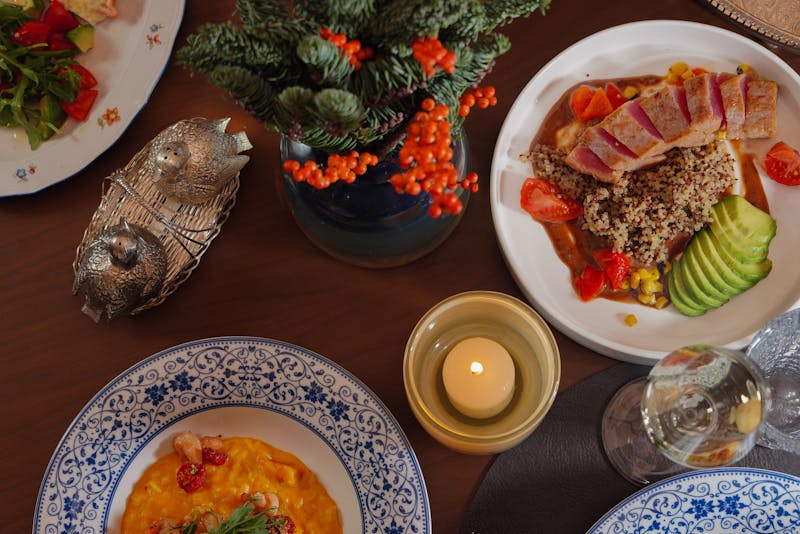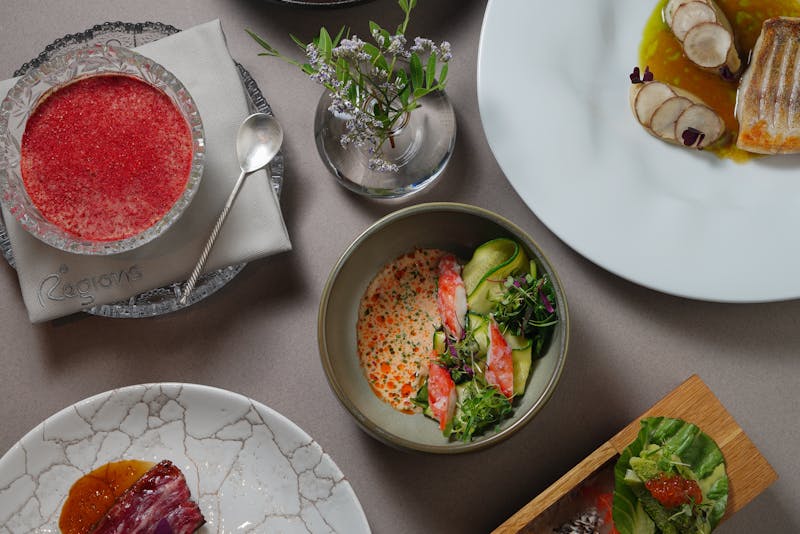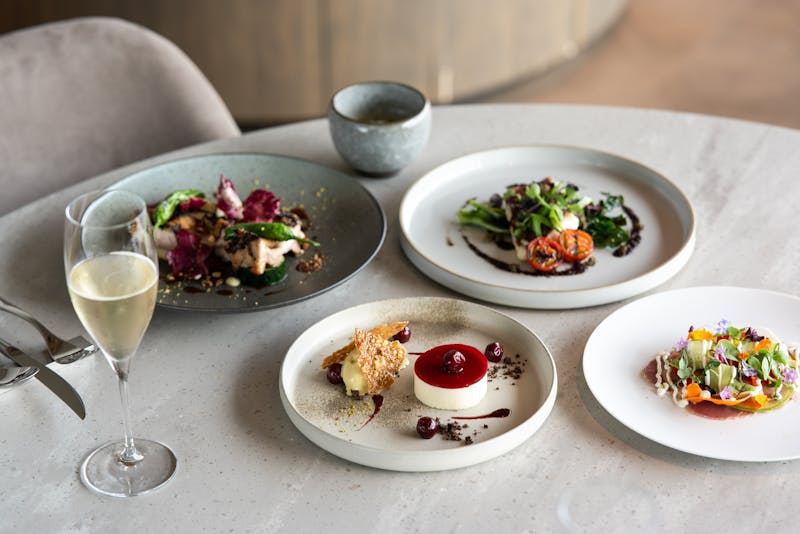
- Fine dining is a global art form that blends culture, tradition, and innovation on every plate.
- Europe remains the benchmark of classic fine dining, with French, Italian, and Nordic cuisines leading the way.
- Asian fine dining emphasizes balance, harmony, and presentation, showcasing centuries-old culinary precision.
- The Americas are redefining luxury dining through creativity, sustainability, and cultural fusion.
- Middle Eastern and African fine dining celebrates bold flavors and heritage while embracing modern refinement.
- Fine dining appetizers and main courses alike tell stories that reflect their regional identity and the chef’s vision.
- Across all continents, fine dining is about more than food—it’s an experience that connects people through taste and artistry.
Fine dining is more than just a meal—it’s a celebration of artistry, culture, and taste. Around the world, fine dining dishes tell stories that go beyond ingredients and recipes, capturing the spirit and traditions of their origins. For foodies, exploring global fine dining is like embarking on a flavorful journey where every bite represents centuries of culinary innovation.
From the delicate techniques of French haute cuisine to the minimalist elegance of Japanese kaiseki, fine dining has evolved into a form of edible art. This article takes you on a gastronomic adventure across continents, showcasing signature dishes, dining customs, and culinary philosophies that define the world’s most exquisite dining experiences.
The European Elegance: Where Classic Meets Contemporary

Europe has long been the heart of fine dining, setting the standard for refinement and culinary excellence. The continent’s restaurants often blend traditional recipes with modern presentation, creating dishes that are both nostalgic and cutting-edge.
In France, haute cuisine remains synonymous with luxury. Dishes like duck à l’orange, foie gras, and beef bourguignon are timeless representations of balance, precision, and indulgence. In Italy, fine dining focuses on simplicity and freshness—think truffle risotto, osso buco, and lobster linguine, each one elevated through regional ingredients and careful craftsmanship.
Across Northern Europe, chefs experiment with New Nordic cuisine, emphasizing sustainability and local produce. Denmark’s Noma, for example, has redefined dining by incorporating foraged herbs, fermented berries, and seasonal seafood into minimalist but flavorful creations.
Highlights of European Fine Dining:
- French haute cuisine with classic sauces and meticulous plating.
- Italian fine dining emphasizing quality ingredients and regional traditions.
- Scandinavian innovation focused on nature and sustainability.
Asian Mastery: Precision, Balance, and Deep Tradition
Asia’s fine dining scene embodies balance, respect for ingredients, and an almost spiritual approach to cooking. Culinary traditions here date back centuries, yet modern Asian chefs are reimagining them for global palates.
In Japan, kaiseki dining is an art form built around harmony, seasonality, and aesthetics. Each course—from delicate sashimi to miso soup—is served in a specific order to reflect nature’s flow. In China, fine dining often means multi-course banquets showcasing Peking duck, abalone, and dim sum, representing abundance and sophistication. Meanwhile, Thailand’s upscale restaurants have brought fiery curries and street-food staples into refined tasting menus that maintain their authentic flavors.
Asian Fine Dining Must-Try Dishes:
- Japan’s kaiseki with meticulous presentation and seasonal ingredients.
- China’s Peking duck served with handmade pancakes and sweet bean sauce.
- Thailand’s green curry lobster blending spice and elegance.
Asian fine dining’s precision and respect for detail are what make it stand out on the world stage. Even fine dining appetizers in this region, such as amuse-bouches featuring sea urchin or marinated tofu, showcase the same artistry as the main courses.
The Americas: Innovation Meets Cultural Fusion
In North and South America, fine dining has taken a bold and innovative turn. The region’s top chefs are redefining what luxury cuisine means by combining local traditions, indigenous ingredients, and global techniques.
In the United States, New American cuisine champions creativity—dishes like butter-poached lobster, dry-aged steak with truffle butter, or farm-to-table vegetable tasting menus blend global flavors with sustainability. In Mexico, chefs have elevated local staples such as mole poblano, corn masa, and chiles en nogada, turning them into elegant fine dining experiences.
Further south, Peru has emerged as a global dining powerhouse. Restaurants like Central in Lima use ingredients sourced from the Amazon and Andes, crafting tasting menus that represent Peru’s diverse ecosystems.
Iconic Fine Dining Dishes in the Americas:
- U.S. contemporary tasting menus focusing on seasonal ingredients.
- Mexican fine dining that honors ancestral recipes with modern flair.
- Peruvian dishes showcasing biodiversity and regional authenticity.
Middle Eastern and African Inspirations: A Feast of Flavors and Heritage

The Middle East and Africa offer fine dining experiences that blend ancient traditions with modern refinement. Here, chefs reinterpret classic flavors through innovative techniques while staying true to their cultural roots.
In Lebanon and Morocco, fine dining dishes like lamb tagine, mezze platters, and stuffed grape leaves are celebrated for their aromatic spices and complex flavor layers. Dubai’s upscale dining scene, on the other hand, has become a global hotspot for culinary experimentation, fusing Emirati traditions with French, Indian, and Mediterranean influences.
Across Africa, fine dining is gaining international attention. South Africa’s gourmet restaurants use locally sourced ingredients like ostrich, springbok, and rooibos to create menus that are both refined and proudly regional.
Signature Middle Eastern and African Dishes:
- Moroccan lamb tagine infused with saffron and apricots.
- Lebanese mezze elevated with contemporary plating.
- South African tasting menus celebrating indigenous ingredients.
What Makes Fine Dining Dishes Truly Global?
Fine dining dishes around the world share a few universal qualities: creativity, precision, and storytelling. Each course tells a story about its origin, its chef, and the culture it represents. While ingredients may differ—from European truffles to Asian yuzu or Peruvian quinoa—the goal remains the same: to deliver an unforgettable sensory experience.
As fine dining continues to evolve, it bridges cultures and traditions, allowing foodies to experience the world through taste. Whether in a Parisian bistro, a Tokyo kaiseki restaurant, or a Lima tasting room, every dish is a passport to understanding the world’s diverse culinary landscapes.
Share This :


